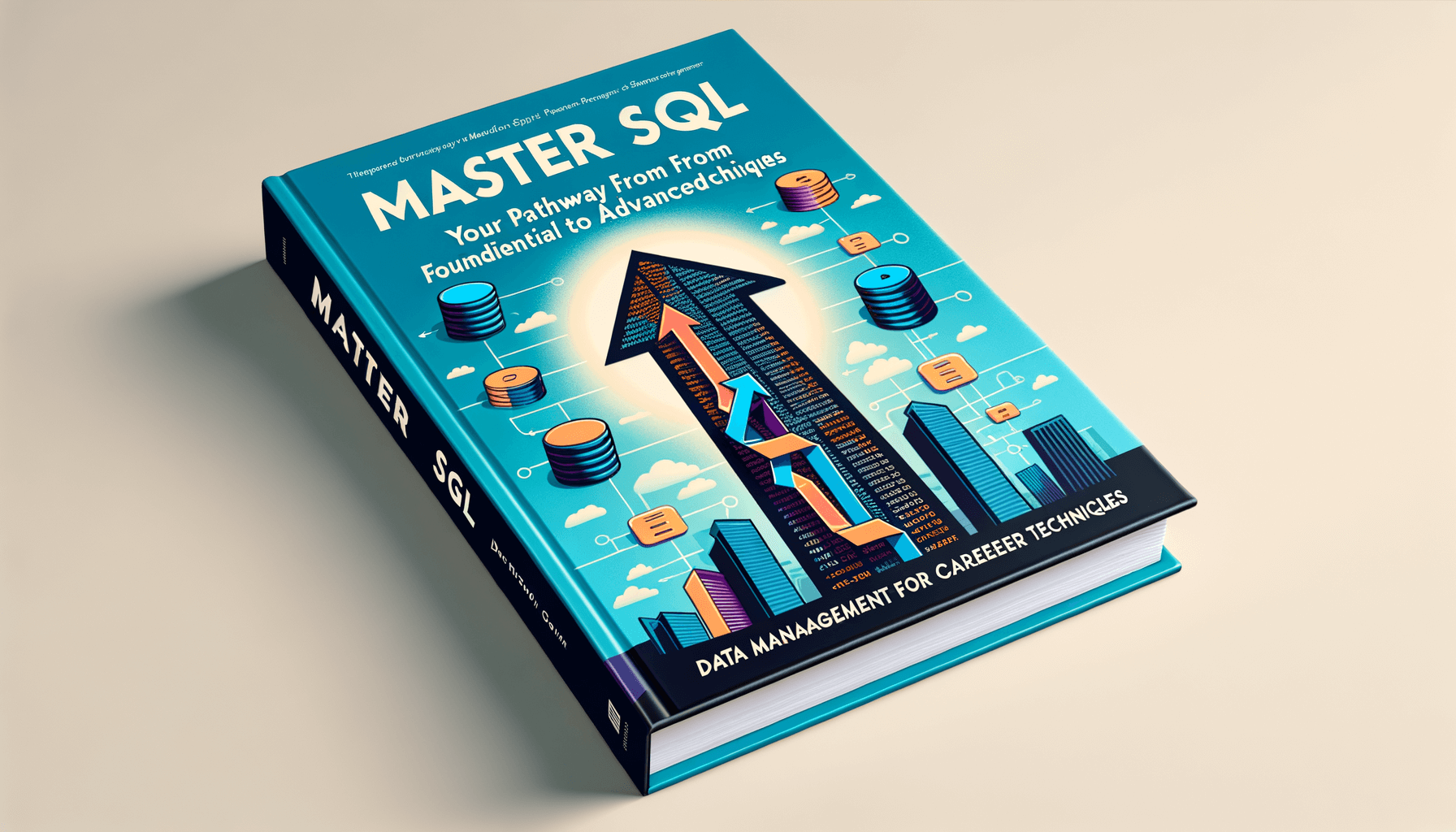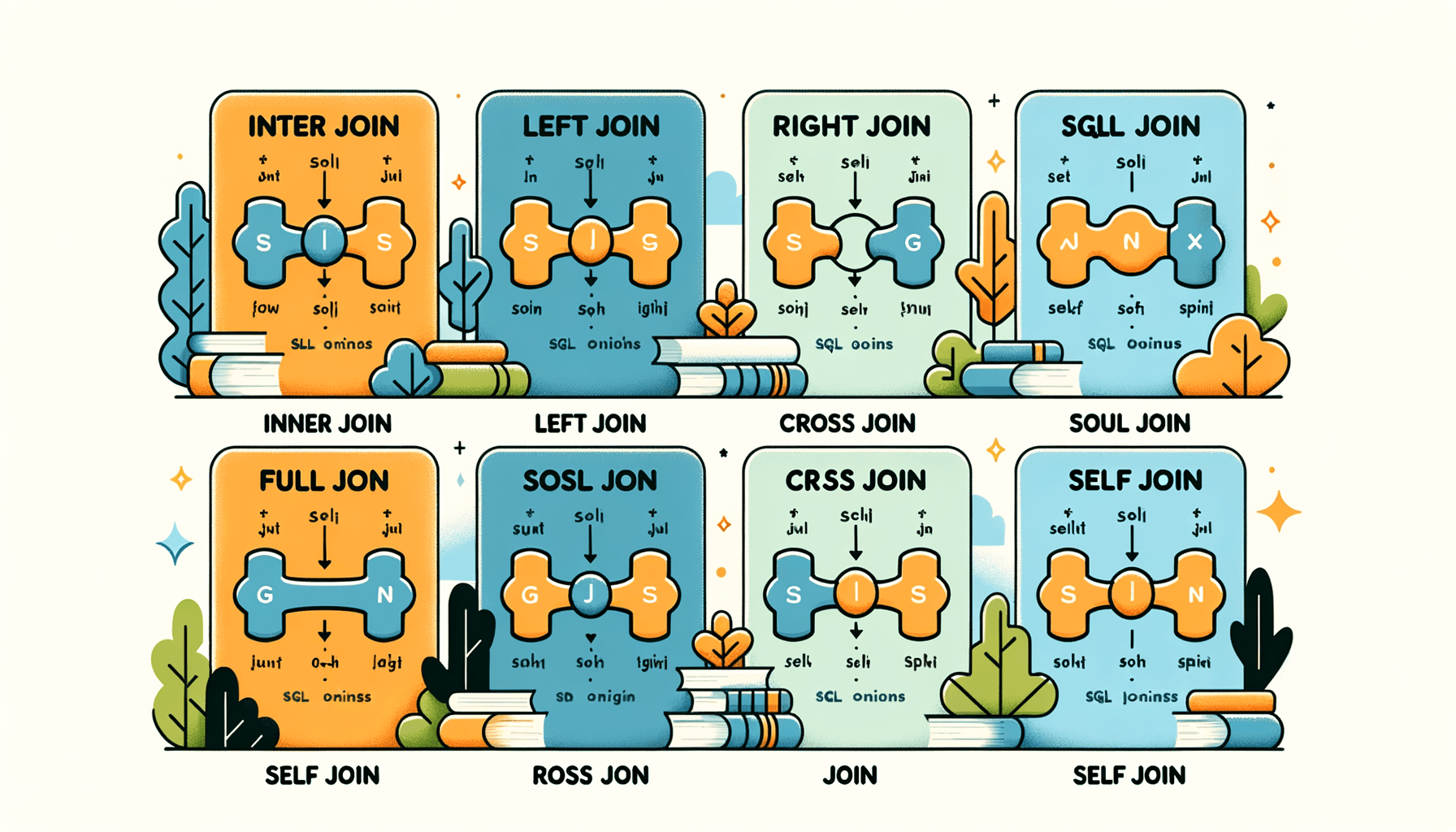A big variety of articles and resources

Unlocking the Power of Column Databases: A Comprehensive Guide
 Sia Author and Instructor
Learn SQL
Sia Author and Instructor
Learn SQL
13 minute read
Column databases are changing the way we handle and analyze data. Unlike traditional row-oriented databases, column databases store data in columns rather than rows, making them highly efficient for read-heavy operations. In this guide, we'll explore the fundamentals, benefits, and applications of column databases, helping you understand why they are becoming a popular choice for modern data management.
Key Takeaways
- Column databases store data in columns, optimizing read-heavy operations.
- They offer significant performance benefits, especially in data retrieval and aggregation tasks.
- Column databases are highly scalable, making them suitable for large-scale data applications.
- They are widely used in business intelligence, real-time data processing, and data warehousing.
- Understanding the architecture and best practices is crucial for effective implementation.
Understanding Column Databases
Definition and Characteristics
Column databases, also known as columnar databases, store data in columns rather than rows. This structure allows for faster data retrieval and efficient storage. Column databases excel in read-heavy operations because they can quickly access the required columns without scanning entire rows.
Historical Context and Evolution
Column databases have evolved significantly over the years. Initially designed for data warehousing, they have now found applications in various fields. The shift from row-oriented to column-oriented storage was driven by the need for better performance in analytical queries.
Comparison with Row-Oriented Databases
While row-oriented databases store data in rows, making them suitable for transactional operations, column databases store data in columns, optimizing them for analytical tasks. Here's a quick comparison:
| Feature | Row-Oriented Databases | Column Databases |
|---|---|---|
| Storage | Rows | Columns |
| Use Case | Transactional | Analytical |
| Performance | Slower for reads | Faster for reads |
Understanding the differences between these two types of databases helps in choosing the right one for your specific needs.
Architectural Foundations of Column Databases
Columnar Storage Mechanisms
Column databases store data in columns rather than rows. This structure allows for efficient data retrieval and storage. Columnar storage is particularly useful for read-heavy operations, as it minimizes the amount of data read from disk.
Data Compression Techniques
Column databases often use advanced data compression techniques. These methods reduce storage requirements and improve query performance. Common techniques include run-length encoding and dictionary encoding.
Indexing and Query Optimization
Indexing in column databases is designed to speed up query performance. By creating indexes on specific columns, databases can quickly locate and retrieve relevant data. Query optimization techniques further enhance performance by reducing the computational load during data retrieval.
Understanding the architectural foundations of column databases is crucial for leveraging their full potential in data-intensive applications.
Performance Benefits of Column Databases
Query Speed and Efficiency
Column databases are designed to read data quickly. By storing data in columns rather than rows, they allow for faster retrieval of specific data points. This is especially useful for analytical queries that need to scan large datasets. Columnar storage can significantly reduce the amount of data read from disk, making queries much faster.
Scalability and Load Handling
Column databases excel in handling large volumes of data. They can easily scale out by adding more nodes to the system. This makes them ideal for applications that require high availability and can handle large-scale data loads without performance degradation.
Data Retrieval and Aggregation
When it comes to data retrieval and aggregation, column databases shine. They are optimized for operations like SUM, AVG, and COUNT, which are common in analytical workloads. By storing data in columns, these databases can quickly access and aggregate the necessary data, providing results in a fraction of the time it would take a row-oriented database.
In summary, column databases offer significant performance benefits, particularly in query speed, scalability, and data aggregation. These advantages make them a powerful tool for handling large-scale analytical workloads.
Use Cases and Applications
Column databases are incredibly versatile and can be applied in various fields to enhance data management and analysis. Here, I will explore some of the most common use cases and applications of column databases.
Business Intelligence and Analytics
Column databases are a game-changer for business intelligence and analytics. They allow for faster data retrieval and more efficient query processing. This is particularly useful for generating reports and dashboards that provide insights into business performance. By storing data in columns, these databases can quickly aggregate and analyze large datasets, making them ideal for real-time decision-making.
Real-Time Data Processing
In scenarios where real-time data processing is crucial, column databases excel. They can handle high-velocity data streams and provide quick access to the most recent data. This is essential for applications like fraud detection, where timely data analysis can prevent significant losses. The ability to process data in real-time ensures that businesses can react swiftly to changing conditions.
Data Warehousing Solutions
Column databases are also widely used in data warehousing. They offer efficient storage and retrieval of large volumes of data, making them perfect for long-term data storage and historical analysis. Data warehousing solutions benefit from the high compression rates and fast query performance of column databases, enabling organizations to store vast amounts of data without compromising on speed or efficiency.
Column databases are essential for modern data-driven businesses, offering unparalleled speed and efficiency in data retrieval and analysis.
Column Database Management Systems
Popular Column Database Software
When it comes to column databases, several software options stand out. Apache Cassandra, Amazon Redshift, and Google BigQuery are among the most popular. Each of these systems offers unique features tailored to different needs. For instance, Apache Cassandra is known for its high availability and scalability, making it ideal for applications that require constant uptime. On the other hand, Amazon Redshift is optimized for complex queries and large-scale data warehousing, while Google BigQuery excels in real-time analytics and fast query performance.
Open-Source vs. Commercial Solutions
Choosing between open-source and commercial column databases depends on your specific requirements. Open-source solutions like Apache HBase and ClickHouse offer flexibility and cost savings, but they may require more in-house expertise to manage and optimize. Commercial solutions, such as Amazon Redshift and Microsoft Azure Synapse, provide robust support and advanced features, but they come at a higher cost. It's essential to weigh the benefits and drawbacks of each to determine the best fit for your organization.
Integration with Existing Systems
Integrating a column database with your existing systems can be a complex task. However, the benefits often outweigh the challenges. Column databases can significantly enhance your data processing capabilities, especially for analytics and reporting. Many column databases offer connectors and APIs that facilitate integration with popular data tools and platforms. For example, Google BigQuery provides seamless integration with Google Analytics and other Google Cloud services, making it easier to incorporate into your existing workflow.
Successfully integrating a column database can transform your data strategy, offering faster query performance and more efficient data management.
Data Modeling in Column Databases
Schema Design Principles
When designing schemas for column databases, it's crucial to focus on how data will be queried. Unlike row-oriented databases, column databases store data by columns, which allows for more efficient retrieval of specific data points. This design can significantly speed up query performance. It's essential to understand the access patterns and design the schema to optimize for those patterns.
Normalization and Denormalization
Normalization involves organizing data to reduce redundancy, while denormalization does the opposite to improve read performance. In column databases, a balance between the two is often necessary. Denormalization can lead to faster query times but may increase storage requirements. On the other hand, normalization can save space but might slow down data retrieval.
Handling Complex Data Types
Column databases are well-suited for handling complex data types like JSON and XML. These databases can store and query these types efficiently, making them ideal for applications that require flexible data models. However, it's important to carefully design how these complex types are stored to ensure optimal performance.
In column databases, the way you model your data can have a profound impact on performance and efficiency. Proper schema design, balancing normalization and denormalization, and effectively handling complex data types are all critical components of successful data modeling.
Security and Compliance
Data Encryption Methods
In column databases, data encryption is crucial for protecting sensitive information. Encrypting data at rest and in transit ensures that unauthorized users cannot access or read the data. Common encryption methods include AES (Advanced Encryption Standard) and RSA (Rivest-Shamir-Adleman). Implementing these methods helps in safeguarding data against breaches and cyber-attacks.
Access Control and Authentication
Access control mechanisms are essential to restrict who can view or modify the data. Role-based access control (RBAC) is a popular method where users are assigned roles with specific permissions. Additionally, multi-factor authentication (MFA) adds an extra layer of security by requiring users to provide two or more verification factors to gain access.
Regulatory Compliance
Compliance with regulations such as GDPR (General Data Protection Regulation) and HIPAA (Health Insurance Portability and Accountability Act) is mandatory for many organizations. These regulations set standards for data protection and privacy. Ensuring compliance involves regular audits, data protection impact assessments, and maintaining detailed records of data processing activities.
It's important to stay updated with the latest security practices and regulatory requirements to protect your data and avoid legal penalties.
Challenges and Limitations
Data Loading and ETL Processes
One of the main challenges with column databases is the data loading and ETL (Extract, Transform, Load) processes. These processes can be complex and time-consuming, especially when dealing with large datasets. The need for efficient data transformation and loading mechanisms is crucial to maintain performance and data integrity.
Handling Unstructured Data
Column databases excel at handling structured data, but they often struggle with unstructured data. This limitation can be a significant drawback for organizations that need to manage diverse data types, including text, images, and videos. Finding ways to integrate unstructured data into a columnar format remains a challenge.
Cost Considerations
Implementing and maintaining a column database can be expensive. Costs can include software licenses, hardware, and the expertise needed to manage and optimize the database. It's essential to weigh these costs against the performance benefits to determine if a column database is the right solution for your needs.
While column databases offer numerous advantages, it's important to be aware of their challenges and limitations to make an informed decision.
Future Trends in Column Databases
Advancements in Hardware
Column databases are set to benefit greatly from new hardware technologies. Faster processors and larger memory capacities will enable quicker data retrieval and processing. Additionally, the rise of NVMe storage solutions will further enhance performance, making column databases more efficient and reliable.
AI and Machine Learning Integration
The integration of AI and machine learning into column databases is a game-changer. These technologies can automate many tasks, such as query optimization and data indexing, leading to improved performance and reduced manual intervention. Machine learning algorithms can also predict query patterns, making data retrieval faster and more accurate.
Cloud-Based Column Databases
Cloud-based solutions are becoming increasingly popular for their flexibility and scalability. Column databases hosted in the cloud offer several advantages, including easy scalability, reduced infrastructure costs, and enhanced data security. This trend is likely to continue as more businesses move their data operations to the cloud.
Staying updated with these trends is crucial for anyone involved in database management. The future of column databases looks promising, with advancements that will make data handling more efficient and effective.
Best Practices for Implementation
Choosing the Right Column Database
Selecting the appropriate column database is crucial. Consider factors like data volume, query complexity, and budget. Evaluate different options to find the best fit for your needs.
Performance Tuning and Optimization
Optimizing performance involves fine-tuning queries and indexing strategies. Regularly monitor system performance and make adjustments as needed to maintain efficiency.
Monitoring and Maintenance
Ongoing monitoring and maintenance are essential for long-term success. Set up automated alerts for potential issues and perform routine checks to ensure the system runs smoothly.
Implementing these best practices can significantly enhance the performance and reliability of your column database system.
Case Studies and Industry Examples
Successful Implementations
Column databases have been successfully implemented in various industries, showcasing their versatility and efficiency. For instance, a leading retail company used a column database to optimize their inventory management system. This resulted in a 50% reduction in query time, significantly improving their operational efficiency.
Lessons Learned
From these implementations, several lessons have been learned. One key takeaway is the importance of proper schema design. Poorly designed schemas can lead to performance bottlenecks. Additionally, it's crucial to invest in training for the team to fully leverage the capabilities of column databases.
Industry-Specific Insights
Different industries have unique requirements and challenges. In the healthcare sector, column databases have been used to manage large volumes of patient data, enabling faster retrieval and analysis. In finance, they have been instrumental in real-time data processing, allowing for quicker decision-making and improved risk management.
Column databases offer significant advantages across various industries, but their success depends on careful planning and execution.
Explore our case studies and industry examples to see how our courses have helped others succeed. From SQL to AI, our students have achieved amazing results. Ready to join them? Visit our website to learn more and start your journey today!
Conclusion
In conclusion, column databases offer a powerful way to handle large volumes of data efficiently. They are particularly useful for analytical queries, where speed and performance are crucial. By organizing data in columns rather than rows, these databases can significantly reduce the amount of data read during queries, leading to faster results. As data continues to grow in size and complexity, the importance of efficient data management cannot be overstated. Column databases provide a robust solution to meet these demands, making them an essential tool for modern data management. Whether you are a database administrator, a data scientist, or an IT professional, understanding and leveraging the power of column databases can greatly enhance your ability to manage and analyze data effectively.
Frequently Asked Questions
What is a column database?
A column database stores data in columns instead of rows, making it faster for reading and analyzing large datasets.
How is a column database different from a row-oriented database?
In a column database, data is stored in columns, which speeds up read operations. In a row-oriented database, data is stored in rows, which is better for write operations.
What are the main benefits of using a column database?
Column databases offer faster query performance, better data compression, and efficient data retrieval, especially for analytical tasks.
Can column databases handle large amounts of data?
Yes, column databases are designed to handle large datasets efficiently, making them suitable for big data applications.
What are some common use cases for column databases?
Column databases are often used in business intelligence, data warehousing, real-time analytics, and big data processing.
Are column databases secure?
Yes, many column databases include security features like data encryption and access control to protect sensitive information.
Is it difficult to switch from a row-oriented database to a column database?
Switching can be challenging and may require data migration and changes to your applications, but the performance benefits can be worth it.
Are there open-source column databases available?
Yes, there are several open-source column databases like Apache Cassandra and ClickHouse that you can use.







